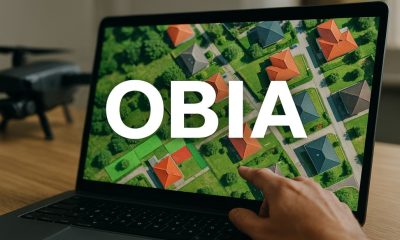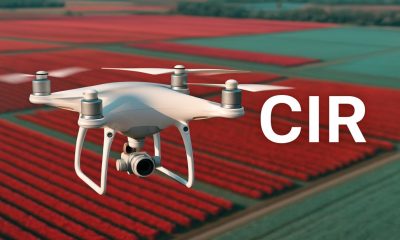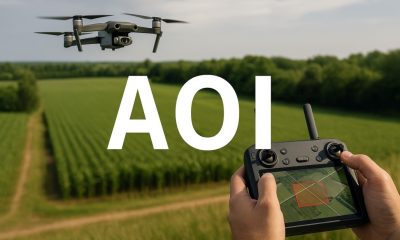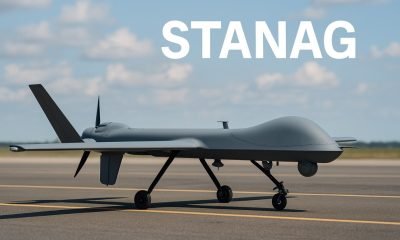- Acronym Guide
- AAM
- ABS
- AC
- ACAS
- ADS-B
- AFAC
- AGL
- AI
- AIM
- ALS
- AM
- AMA
- ANSP
- AOI
- APPI
- AUV
- AUVSI
- ARPAS-UK
- ASTM
- ATC
- BVLOS
- CAA
- CAAC
- CAB
- CASA
- CATT
- CBO
- CBR
- CBRN
- CDMA
- CDR
- CFR
- CIR
- COA
- COMINT
- CORS
- COTP
- COTR
- CPTED
- CV
- C2
- DAA
- DEM
- DFI
- DFS
- DGCA
- DHS
- DOD
- DPA
- DPEs
- DRG
- DRO
- DSM
- DSMX
- DSP
- DSSS
- DTM
- EASA
- EFT
- EO
- EOD
- EO/IR
- ELINT
- EMI
- ESC
- EVLOS
- eVTOLs
- FAA
- FCC
- FCS
- FHSS
- FICCI
- FLIR
- FOB
- FOV
- FPS
- FPV
- GBDAA
- GCP
- GCS
- GDPR
- GML
- GNSS
- GPS
- GSD
- GVC
- HDR
- HOGE
- IACRA
- ICAO
- ICS
- IMU
- INS
- IR
- ISA
- ISR
- ITU
- JARUS
- LAAMS
- LAANC
- LAATM
- LAI
- LBA
- LIDAR
- LOS
- LSALT
- MAC
- MAVLink
- MLIT
- MMS
- MSL
- MTOM
- NDAA
- NCSL
- NFZ
- NIST
- NMEA
- NOTAM
- NPA
- NPRM
- NTIA
- OBIA
- OEM
- OFDM
- OOP
- PASM
- PAV
- PCV
- PdM
- PEC
- PIC
- PID
- PIPL
- PLD
- PM
- PN
- PPK
- PPS
- PSM
- PWM
- UAM
- UAOP
- UAS
- UASTM
- UAV
- UCAVs
- UHD
- UHF
- USV
- UTM
- RAIM
- RCC
- RCS
- RFI
- ReOC
- RePL
- RMS
- ROI
- RPAS
- RPC
- RTH
- RTK
- SaR
- SAR
- SARP
- SBAS
- S.Bus
- SBIR
- SEDENA
- SfM
- SFOC
- SIGINT
- SLAM
- SMS
- SORA
- STANAG
- STTR
- sUAS
- TCAS
- TCCA
- TFR
- TIN
- TOF
- TP
- TPS
- TSA
- VHF
- VLOS
- VTOL
Drone Acronyms
What is CBRN (Chemical, Biological, Radiological, and Nuclear)?
Published
2 months agoon
By
Jacob StonerTable Of Contents

Definition
CBRN refers to the classification of hazardous materials and environments involving chemical, biological, radiological, or nuclear threats. In the context of drone operations, CBRN typically describes missions where drones are deployed to detect, monitor, or assist in responding to these types of hazardous situations, often in support of military, emergency response, or homeland security efforts.
Usage
CBRN drones are equipped with specialized sensors and payloads to detect toxic gases, airborne pathogens, radiation levels, or nuclear particles. They are deployed in high-risk or contaminated environments where human exposure would be dangerous. Drones support initial reconnaissance, ongoing monitoring, and data collection to help authorities make informed decisions without risking personnel.
Relevance to the Industry
CBRN capabilities are critical for defense, disaster response, hazmat teams, border patrol, and critical infrastructure protection. By using drones in CBRN zones, agencies can gather accurate, real-time data while minimizing exposure to life-threatening conditions. As drone technology advances, their role in CBRN detection is expanding, offering faster, safer, and more precise methods of managing hazardous incidents.
How Does CBRN (Chemical, Biological, Radiological, and Nuclear) Work?
Drones used in CBRN operations function by deploying specialized sensors and autonomous systems to identify and monitor hazardous substances from a safe distance. These systems are built for rapid deployment in chemically or radiologically contaminated areas where human exposure would pose serious health risks. Here’s how CBRN drone systems work in practice:
Equipping the Drone with CBRN Payloads
The drone is outfitted with sensors capable of detecting specific threats, such as:
Chemical: Electrochemical, PID, or infrared gas sensors detect toxic vapors like chlorine, ammonia, or VOCs.
Biological: Sampling devices collect airborne particulates for lab analysis.
Radiological/Nuclear: Radiation sensors (e.g., Geiger-Müller tubes, scintillation detectors) measure gamma rays or radioactive isotopes in the environment.
Autonomous or Remote Flight into Danger Zones
Operators launch the drone from a safe standoff distance. The aircraft follows pre-programmed flight paths or is controlled manually into potentially contaminated areas—such as chemical spill sites, nuclear incident zones, or suspected biohazard environments.
Live Environmental Monitoring
As the drone surveys the area, its payload sensors collect real-time data. This includes geolocated chemical concentration levels, radiation intensity, thermal readings, and atmospheric conditions. All data is transmitted live to the command center, allowing responders to assess the situation immediately.
Mapping Contaminated Zones
The drone builds a contamination map by logging spatial data tied to detected hazard levels. This helps emergency response teams identify hotspots, safe entry routes, and areas requiring decontamination.
Post-Mission Analysis and Sample Recovery
Some CBRN drones can return with physical samples for lab testing. The data collected supports post-incident forensics, risk modeling, and strategic response planning.
Repeat Missions for Ongoing Threat Assessment
In evolving incidents—such as spreading contamination—drones can be redeployed to monitor how the hazard zone changes over time, enabling continuous situational awareness without endangering personnel.
Through autonomous flight, integrated detection systems, and real-time data transmission, CBRN-capable drones allow for safer, faster, and more informed responses to some of the most dangerous scenarios faced by emergency and defense teams.
Example in Use
“After a suspected chemical spill, the emergency response team deployed a CBRN drone equipped with gas sensors and thermal imaging to assess the danger zone from a safe distance.”
Frequently Asked Questions about CBRN (Chemical, Biological, Radiological, and Nuclear)
What types of sensors are used in CBRN drone missions?
Answer:
Chemical sensors to detect hazardous gases (e.g., chlorine, ammonia).
Biological sampling devices for airborne pathogens or particulates.
Radiological sensors for gamma, beta, or alpha radiation.
Nuclear detection modules for identifying radiation sources or contamination zones.
Who uses CBRN-capable drones?
Answer:
Military and defense forces for reconnaissance in hostile or contaminated zones.
Hazmat and fire departments during chemical accidents or unknown substance events.
Border security to monitor for illicit transport of radioactive materials.
Disaster response teams in natural or man-made incidents involving toxic exposure.
Why are drones valuable in CBRN environments?
Answer:
They reduce human risk by operating in contaminated or dangerous areas.
They offer real-time data for situational awareness and faster decision-making.
They improve coverage and access, reaching areas unsafe or inaccessible to ground teams.
For examples of these acronyms visit our Industries page.
As the CEO of Flyeye.io, Jacob Stoner spearheads the company's operations with his extensive expertise in the drone industry. He is a licensed commercial drone operator in Canada, where he frequently conducts drone inspections. Jacob is a highly respected figure within his local drone community, where he indulges his passion for videography during his leisure time. Above all, Jacob's keen interest lies in the potential societal impact of drone technology advancements.











